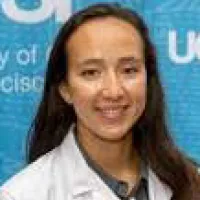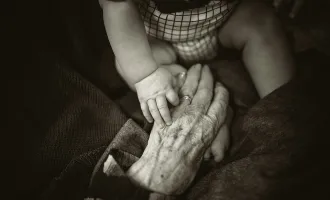
Physicians are Patients Too: A Medical Student’s Exploration of Physician Identity
The refrain “In a healthy individual like you or me” is one I commonly hear as a medical student from residents and attendings on the wards. Yet the underlying assumption is false — physicians and medical students live with injury, chronic illness, and disability.
Many physicians come to medicine with personal experiences of illness or injury. Rates of chronic illness and preventive health needs are comparable to that of the general population, high prevalence of mental health conditions among doctors is a subject of increasing public awareness, and more than 3% of practicing physicians in the US have disabilities. We initially come to medicine with experiences as patient or family member of a patient. This should confer a greater capacity for empathy and deep understanding of patients — a starting point from which clinical skills can grow. Yet as we go through medical training, there is a process of socialization in which the budding physician is taught to define their professional identity in opposition to that of the patient. The transition into the role of the physician is simultaneously a becoming and a distancing.
Research on empathy during medical training suggests that it peaks during medical school with subsequent decline as trainees gain clinical experience. These alarming changes have been posited as the result of necessary distancing for the sake of appearing “professional,” avoiding burnout, or due to overwhelming clinical demands. Studies on this topic jump to solutions, focusing on ways to improve physician empathy rather than directly examining the tension between the role of the physician and the role of the patient.
Attempts to reconcile the dissonant identities of physician and patient are a struggle for doctors and medical trainees. In his 2016 posthumously published memoir When Breath Becomes Air, neurosurgeon Paul Kalanthi described how he “traversed the line from doctor to patient” during his struggle with cancer, moving between the two identities. Physicians are notoriously bad patients. Often professional identity gets in the way of assuming the patient role, with doctors expecting to be treated instead as consultants or colleagues. At the crux of the tension is the assumption that physicians are healthy and able-bodied — in other words, not patients.
In the 1950s, American sociologist Talcott Parsons developed the concept of the “sick role” to describe the social dimension of being sick. With this theory, being sick was no longer simply thought of as a statement of fact or physiologic condition, but also a social role that patients take on specific social norms, rights, and obligations. Talcott’s “sick role” fell out of favor in the late 20th century in favor of a social model in which disability is conceived as the result of interactions between impairment and the environment (both physical and social). However medical culture continues to subscribe to the medical model of disability defined by physiologic and pathologic definition of sick and not sick. Parsons’s “sick role” endures.
Medical training programs and working culture both highlight and reinforce the underlying assumption that physicians are fundamentally healthy. Long hours augmented by a culture promoting staying long after the end of shifts with no lunch breaks and rare bathroom breaks promote what one senior medial student described as “displays of conspicuous self-neglect.” Contrast this with the expectations placed on patients: “getting enough sleep, eating healthy food, and exercising”— prioritizing one’s own health. The message is clear: Patients are sick. Physicians are not.
Authority in the patient-physician relationship contributes to the divide between patient and physician. The medical encounter is a complex interaction involving technical knowledge, influenced by social factors, and centered on intensely personal subject matter. Despite changing relationships between the patient and doctor with commercialization and development of a healthcare industry in the past century, historical, sociological, and philosophical investigation has continued to emphasize the importance of doctors’ perceived authority. In practice, “professional identity formation” has become both a topic of study and a formal part of medical school curriculum. Dedicated professional identity development sessions mark in increments the transition from student to student doctor to physician. The discussion focuses on strategies for combatting burnout or building confidence in patient interactions. We rarely discuss the deeply personal, and often subconscious transformation that occurs as we are socialized into this new role of authority, and away from our experiences as patients ourselves.
Instead, we learn to navigate the inherent asymmetry of the patient-physician relationship through mastery of evidence-based medical knowledge. Setting aside anecdotal or personal experience in favor of empiric data facilitates an air of objectivity. Yet subjectivity sneaks in everywhere. Calls for diversity within medical practice explicitly acknowledge the importance of physicians’ personal experiences with race, gender, religion, sexual orientation. Personal experience is a powerful way for physicians to connect with patients, and to strengthen their relationship. And yet disability, sickness, and injury — circumstances that bring patients to our clinics — remain incongruent with our concept of a physician.
Admittedly, some medical conditions may make becoming a certain type of physician unreasonable. A surgeon, for example, needs to physically be able to perform surgeries. But understanding how to help patients requires understanding them. In this context, personal experience is a potential asset that augments the ability to care for patients. There may always be tension between the identities of physician and patient. Physicians take responsibility for intimate parts of their patients’ lives while patients look to physicians as a source of authority. Navigating the duality of identities as a physician and patient will likely always be challenging, yet it need not be as impossible or contradictory as it often seems.



